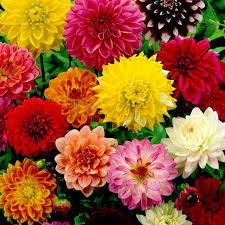**Utilizing Medicinal Chrysanthemum Flowers in Traditional Medicine: A Comprehensive Guide**

Medicinal chrysanthemum flowers have been integral to traditional medicine practices across cultures for their diverse therapeutic properties and health benefits. From ancient China to Ayurveda in India, chrysanthemum flowers have been valued for their medicinal applications. This guide explores the rich traditions and practical methods of using medicinal chrysanthemum flowers in traditional medicine.
**1. Traditional Chinese Medicine (TCM)**
In Traditional Chinese Medicine (TCM), chrysanthemum flowers, known as “Ju Hua,” hold a revered place in herbal therapy. They are classified as a cooling herb that disperses wind-heat and clears excess heat from the body. Here are some common ways chrysanthemum flowers are used in TCM:
– **Chrysanthemum Tea (Ju Hua Cha):** Chrysanthemum flowers are commonly brewed into a fragrant tea known for its cooling properties. This tea is often consumed to alleviate symptoms of fever, sore throat, headache, and red eyes. Chrysanthemum tea is also believed to detoxify the liver and improve vision.
– **Herbal Formulations:** Chrysanthemum flowers are frequently included in herbal formulations to enhance their therapeutic effects. They are combined with other herbs to create formulas for treating conditions like hypertension, coughs, respiratory infections, and skin inflammations.
– **External Applications:** Chrysanthemum flowers can be used externally in the form of compresses or washes to soothe skin irritations, reduce inflammation, and relieve itching or redness.
**2. Ayurveda**
In Ayurvedic medicine, chrysanthemum flowers are known as “Sevantika” or “Sevanti.” They are considered cooling and have a bitter taste, making them beneficial for balancing the Pitta dosha (fire and water elements) and pacifying excess heat in the body. Here’s how chrysanthemum flowers are used in Ayurveda:
– **Eye Care:** Chrysanthemum flowers are used in the form of eye drops or eyewashes to reduce eye strain, inflammation, and irritation. They are believed to nourish the eyes, improve vision, and protect against eye diseases.
– **Digestive Aid:** Chrysanthemum flowers are used to stimulate digestion and relieve digestive discomfort. They are sometimes brewed into a tea or included in herbal formulas to support healthy digestion and liver function.
– **Skin Conditions:** Chrysanthemum flowers are used topically to soothe skin conditions like acne, eczema, and rashes. They have anti-inflammatory and antimicrobial properties that can help calm irritated skin and promote healing.
**3. Korean Traditional Medicine**
In Korean traditional medicine, chrysanthemum flowers are known as “Gukhwa” or “Kkotgukhwa.” They are valued for their therapeutic effects on various health issues. Here’s how chrysanthemum flowers are used in Korean traditional medicine:
– **Respiratory Support:** Chrysanthemum flowers are used to treat respiratory conditions such as coughs, bronchitis, and asthma. They are believed to have expectorant properties that help clear phlegm from the lungs and airways.
– **Detoxification:** Chrysanthemum flowers are used in detoxification therapies to cleanse the body of toxins and impurities. They are often included in herbal formulas for liver detoxification and overall purification.
– **Stress Relief:** Chrysanthemum tea is consumed in Korea as a relaxing beverage to reduce stress, calm the mind, and promote relaxation.
**4. Practical Methods of Use**
Regardless of the traditional medicine system, there are several practical methods of using medicinal chrysanthemum flowers:
– **Tea Infusion:** The most common method is brewing chrysanthemum flowers into a tea. Simply steep dried chrysanthemum flowers in hot water for several minutes to make a soothing and therapeutic beverage.
– **Herbal Combinations:** Chrysanthemum flowers can be combined with other herbs to create specialized formulations tailored to specific health conditions. They are often used synergistically with other cooling herbs or botanicals.
– **External Applications:** Chrysanthemum flowers can be used externally in the form of poultices, compresses, or washes to address skin issues or eye discomfort.
**Conclusion**
Medicinal chrysanthemum flowers offer a myriad of health benefits and play a significant role in traditional medicine systems worldwide. Whether brewed into tea, incorporated into herbal formulations, or used externally, chrysanthemum flowers continue to be cherished for their therapeutic versatility and gentle healing properties. Embrace the wisdom of traditional medicine and explore the myriad ways to incorporate medicinal chrysanthemum flowers into your wellness routine for enhanced health and vitality.
**Part 2: Practical Applications of Medicinal Chrysanthemum Flowers in Traditional Medicine**
Medicinal chrysanthemum flowers have a rich history of usage in traditional medicine systems across various cultures. Their therapeutic benefits extend beyond mere aesthetics, offering practical applications that have been cherished for generations. Let’s explore the diverse ways in which medicinal chrysanthemum flowers are utilized in traditional medicine:
**5. Traditional Chinese Medicine (TCM) Practices**
In Traditional Chinese Medicine (TCM), chrysanthemum flowers (Ju Hua) are regarded as a versatile herb with cooling properties that can dispel wind-heat and clear excess heat from the body. Here are some common methods of using chrysanthemum flowers in TCM:
– **Chrysanthemum Tea (Ju Hua Cha):** One of the most popular preparations, chrysanthemum flowers are brewed into a fragrant tea that is consumed for its cooling and detoxifying effects. Chrysanthemum tea is commonly enjoyed to alleviate symptoms of fever, sore throat, headache, and eye irritation.
– **Herbal Formulations:** Chrysanthemum flowers are frequently included in TCM herbal formulas to enhance their therapeutic actions. They are often combined with other herbs to create remedies for conditions like hypertension, coughs, respiratory infections, and skin inflammations.
– **External Applications:** Chrysanthemum flowers can be used externally in the form of compresses, washes, or poultices. They are applied to the skin to soothe inflammation, reduce redness, and relieve itching or irritation.
**6. Ayurvedic Practices**
In Ayurveda, the traditional medicine system of India, chrysanthemum flowers are known as “Sevantika” or “Sevanti.” They are considered cooling and have a bitter taste, making them beneficial for balancing the Pitta dosha (fire and water elements) and pacifying excess heat in the body. Here’s how chrysanthemum flowers are used in Ayurveda:
– **Eye Care:** Chrysanthemum flowers are used to prepare eye drops or eyewashes to reduce eye strain, inflammation, and dryness. They are believed to nourish the eyes, improve vision, and protect against eye diseases.
– **Digestive Aid:** Chrysanthemum flowers are used to stimulate digestion and relieve digestive discomfort. They can be brewed into a tea or included in herbal formulas to support healthy digestion and liver function.
– **Skin Conditions:** Chrysanthemum flowers are used topically to soothe skin conditions like acne, eczema, and rashes. They possess anti-inflammatory and antimicrobial properties that help calm irritated skin and promote healing.
**7. Korean Traditional Medicine Practices**
In Korean traditional medicine, chrysanthemum flowers are known as “Gukhwa” or “Kkotgukhwa.” They are valued for their therapeutic effects on various health issues. Here’s how chrysanthemum flowers are used in Korean traditional medicine:
– **Respiratory Support:** Chrysanthemum flowers are used to treat respiratory conditions such as coughs, bronchitis, and asthma. They are believed to have expectorant properties that help clear phlegm from the lungs and airways.
– **Detoxification:** Chrysanthemum flowers are used in detoxification therapies to cleanse the body of toxins and impurities. They are often included in herbal formulas for liver detoxification and overall purification.
– **Stress Relief:** Chrysanthemum tea is consumed in Korea as a relaxing beverage to reduce stress, calm the mind, and promote relaxation.
**Practical Methods of Use:**
Regardless of the traditional medicine system, there are several practical methods of using medicinal chrysanthemum flowers:
– **Chrysanthemum Tea:** The most common method is brewing dried chrysanthemum flowers into a tea. This soothing beverage can be consumed daily for its health benefits.
– **Herbal Combinations:** Chrysanthemum flowers can be combined with other herbs to create specialized formulations tailored to specific health conditions. They are often used synergistically with other cooling herbs or botanicals.
– **External Applications:** Chrysanthemum flowers can be used externally in the form of poultices, compresses, or washes to address skin issues or eye discomfort.
**Conclusion**
Medicinal chrysanthemum flowers are esteemed for their therapeutic versatility and gentle healing properties in traditional medicine practices worldwide. Whether brewed into tea, incorporated into herbal formulations, or used externally, chrysanthemum flowers continue to play a significant role in promoting health and well-being. Embrace the wisdom of traditional medicine and explore the myriad ways to incorporate medicinal chrysanthemum flowers into your wellness routine for enhanced vitality and holistic balance.


